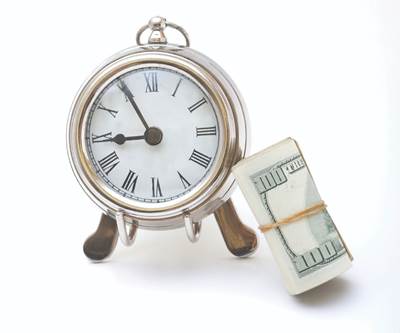Tax Reform Impact on Research Incentives
Tax reform changes the benefits of the R&D tax credit and the alternative minimum tax.
The Tax Cuts and Jobs Act of 2017, signed into law in December last year, drastically changes how mold builders pay federal income taxes in 2017 and beyond. These changes impact tax rates as well as the treatment of capital expenditures and various incentives that mold builders are (or should be) using. The next few installments of this column will cover how these changes impact the business of mold building and the amount of federal income taxes that mold builders pay.
Changes to tax law and treasury regulations over the last decade make the R&D tax credit the most advantageous tool in a mold builder’s tax toolbox. However, the R&D tax credit is not the only research-based incentive that mold shops claim. Currently, shops also can elect to deduct research expenditures in the tax year that those expenditures are paid or incurred (even if the expenditures result in future value to the company). The following provides an overview of the changes to the research incentives that mold builders claim as well as other changes impacting the use of those incentives.
R&D Tax Credit
The R&D tax credit rewards mold shops for the development of novel, unique, one-of-a-kind molds. The credit is activity-based. It rewards shops for developing or improving its products or processes where modeling, simulation or systematic trial-and-error eliminate technological design uncertainty.
A 2016 American Mold Builders Association survey revealed that almost one-half of mold shops participating in the survey claim the credit. Of those claiming the credit, almost three-fourths indicate that they include the labor and materials cost of new molds that are ultimately sold to customers as qualified research expenditures.
IRC §41, which tax reform did not change, governs the R&D tax credit. However, the R&D tax credit’s value increased by 21.5 percent after Congress reduced the top corporate tax rate as a result of a provision of the IRC §280C.
IRC §280C requires shops to reduce research expenditures by the amount of the research tax credit that is claimed. So, if a shop incurred $1,000,000 of research expenditures in the calendar year 2017, resulting in a $100,000 tax credit, the shop must reduce its $1,000,000 research expense by the $100,000 tax credit. Under pre-tax reform law, the resulting tax increase is $35,000 (assuming a 35-percent marginal tax rate). Claiming the credit is still beneficial since the mold builder has a $100,000 tax credit to offset the $35,000 of additional tax and an additional $65,000 of federal tax liability.
However, in 2018 and beyond, the top corporate tax rate is 21 percent. So, if a mold builder has the same facts in 2017 ($1,000,000 of research expenditures, resulting in a $100,000 tax credit), IRC §280C would increase its tax liability by $21,000 with a $79,000 federal tax benefit.
The results may not be the same as those with a flow-through entity (S corporations, partnerships or sole proprietorships). Under the new law, mold builders are likely to receive the benefit of the new flow-through deduction of 20 percent of qualifying income, resulting in a top marginal tax rate of 29.6 percent. Subsequent Bottom Line columns will provide more details on this tax rate.
With the same facts in mind, consider that a mold builder is an S corporation that one individual owns entirely. In this example, if the mold builder claims a $100,000 tax credit, IRC §280C would increase the shop’s tax liability by $29,600, resulting in a $70,400 federal tax benefit.
However, mold builders making a special election can level the playing field. Shops that timely file their returns may make an election to claim a reduced tax credit with no change to their research expense amount. An originally filed tax return requires this election, including extensions. By making this election, the shop subtracts the product of its gross credit and the top corporate tax rate from its gross credit to calculate a “reduced” credit.
Again, assuming the same facts,, consider that the shop makes the election under §280C and in doing so subtracts the product of its gross credit of $100,000 and the top corporate tax rate of 21 percent ($21,000) from its gross credit ($100,000), resulting in a reduced credit of $79,000.
This election is available to both C corporations and flow-through entities. So both C corporation and flow-through entity mold builders will see an increased benefit in claiming the R&D tax credit.
All else being equal on a mold builder’s tax return, C corporations will receive the same benefit regardless of whether they make the election under §280C. However, flow-through entities may see an added benefit by making the election to claim the reduced tax credit.
Tax reform has drastically improved the R&D tax credit impact on mold builders, but research deductions are limited in future tax years unless Congressional action occurs before the provision takes effect in 2022.
Alternative Minimum Tax
The Tax Cuts and Jobs Act eliminated the corporate alternative minimum tax (AMT), which makes it a challenge for mold builders with average annual gross receipts more than $50 million to use the R&D tax credits. In tax year beginning after December 31, 2017, C corporations can reduce their tax liabilities down to the general limitation on general business tax credits (or 25 percent of the shop’s regular tax liability that is more than $25,000). As a result, mold builders taxed as C corporations can use the research tax credits more quickly.
The AMT may still limit flow-through entity mold builders who claim the R&D tax credit since tax reform did not eliminate the individual AMT. While owners of flow-through entities that are eligible small businesses (taxpayers with average annual gross receipts of less than $50 million) may use the R&D tax credit to offset AMT, those exceeding this amount still face the general AMT limitation.
However, the AMT limitation will no longer be as onerous. Tax reform increased the individual AMT exemptions and the income amounts for which the exemption begins to be phased-out. Indexed for inflation and beginning in 2018, the AMT exemption amounts are:
- $109,400 for married taxpayers filing jointly or for surviving spouses.
- $70,300 for single taxpayers.
- $54,700 for married taxpayers filing separately.
Also, the income amount for which the exemption begins to phase out increases:
- $1,000,000 for married taxpayers filing jointly or for surviving spouses.
- $500,000 for single taxpayers and married taxpayers filing separately.
With these increases in the exemption and phase-out amounts, the owners of flow-through entities can monetize the R&D tax credits faster.
Future Treatment of Research Expenditures
Tax reform was not all good news. Since 1954, taxpayers could elect to deduct, as current expenses, research expenditures in connection with their trade or business. However, the Tax Cuts and Jobs Act modifies the treatment of mold builder research expenditures. For amounts paid or incurred in tax years beginning after December 31, 2021, mold builders will be required to capitalize their research expenditures and amortize them over five years (and 15 years for any research performed outside the United States). While potentially temporary, this could have a significant impact on both federal and state tax liabilities.
Tax reform has drastically improved the R&D tax credit impact on mold builders, but research deductions are limited in future tax years unless Congressional action occurs before the provision takes effect in 2022. Either way, mold builders need to pay special attention to research incentives and how they ultimately impact their federal and state tax implications.
About the Author
Michael J. Devereux II, CPA, CMP
Michael J. Devereux II, CPA, CMP is a partner and director of manufacturing, distribution and plastics industry services at Mueller Prost LC.
Related Content
How to Improve Your Current Efficiency Rate
An alternative approach to taking on more EDM-intensive work when technology and personnel investment is not an option.
Read MoreEditorial Guidelines: Editorial Advisory Board
The Editorial Advisory Board of MoldMaking Technology is made up of authorities with expertise within their respective business, industry, technology and profession. Their role is to advise on timely issues, trends, advances in the field, offer editorial thought and direction, review and comment on specific articles and generally act as a sounding board and a conscience for the publication.
Read MoreSteps for Determining Better Mold Prices
Improving your mold pricing requires a deeper understanding of your business.
Read MoreThe Critical Role of Management Representatives in ISO 9001
In ISO 9001 quality management systems, the Management Representative (MR) plays a crucial role. While the 2015 version of ISO 9001 no longer mandates this position, having a trusted management member serve as an MR remains vital for streamlining operations and maintaining quality standards.
Read MoreRead Next
The Bottom Line: Taxation of Mold Builders: 1998 vs. 2018
Tax laws are much more favorable for mold shops today than they were 20 years ago.
Read MoreAre You a Moldmaker Considering 3D Printing? Consider the 3D Printing Workshop at NPE2024
Presentations will cover 3D printing for mold tooling, material innovation, product development, bridge production and full-scale, high-volume additive manufacturing.
Read MoreHow to Use Strategic Planning Tools, Data to Manage the Human Side of Business
Q&A with Marion Wells, MMT EAB member and founder of Human Asset Management.
Read More




















